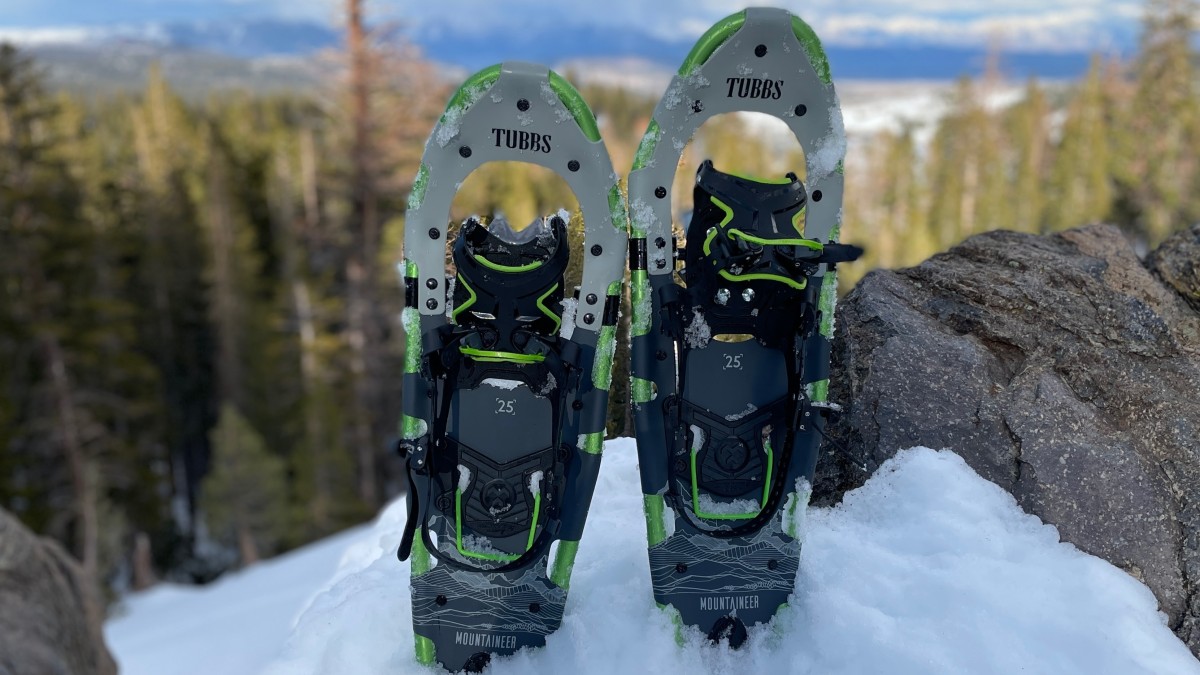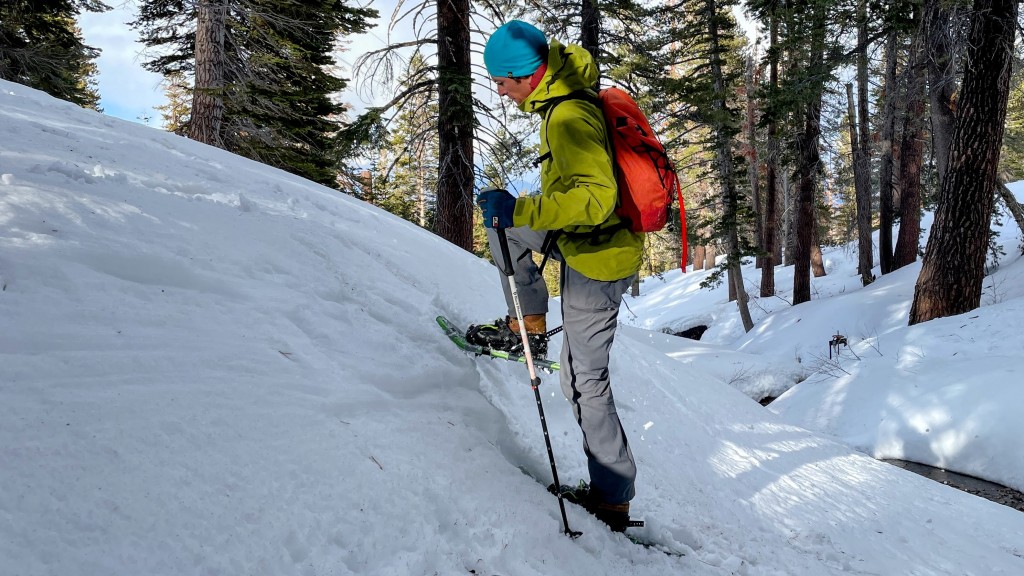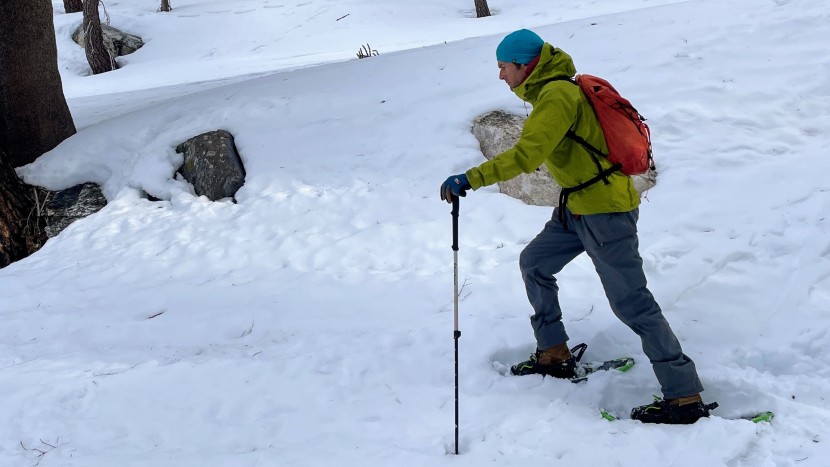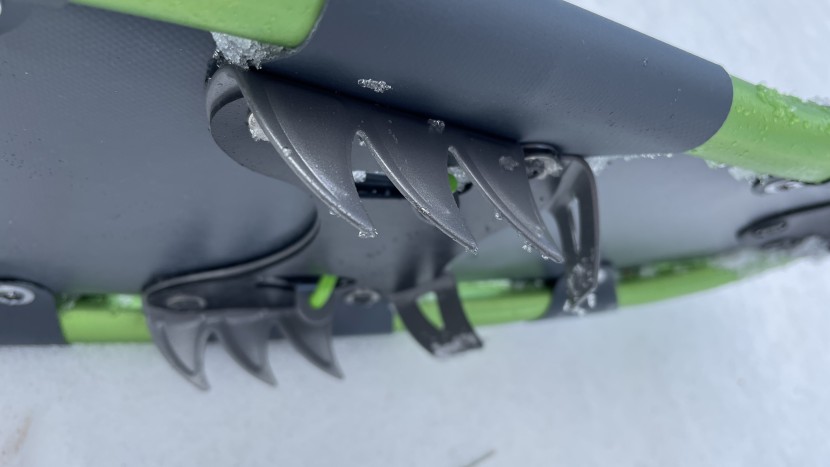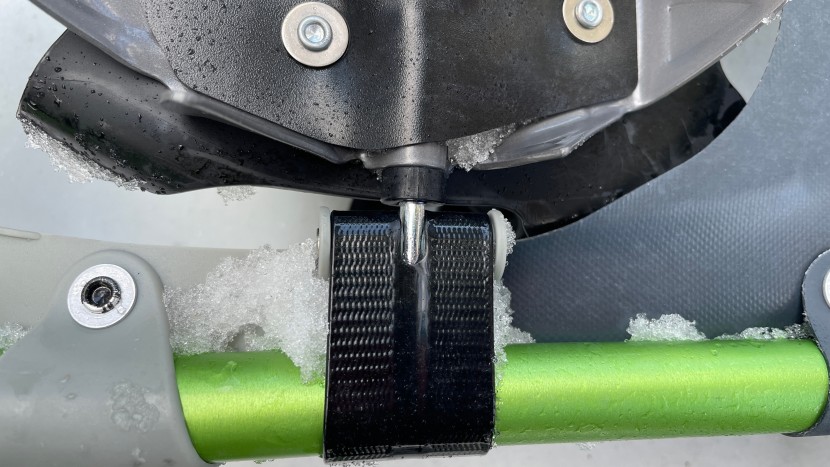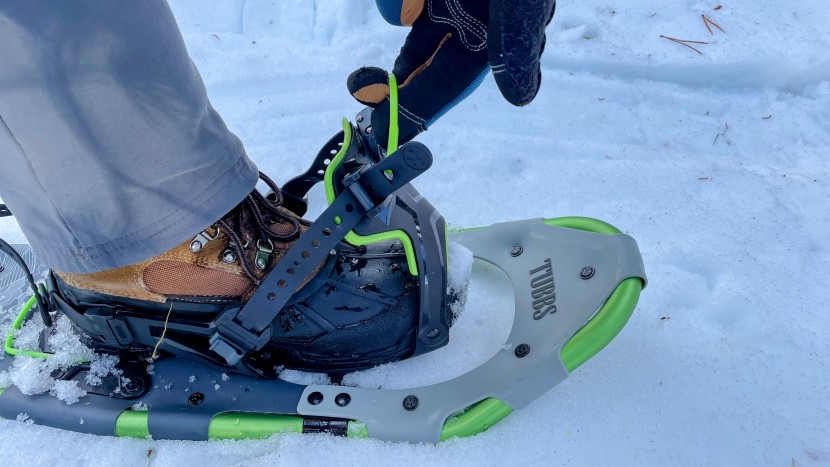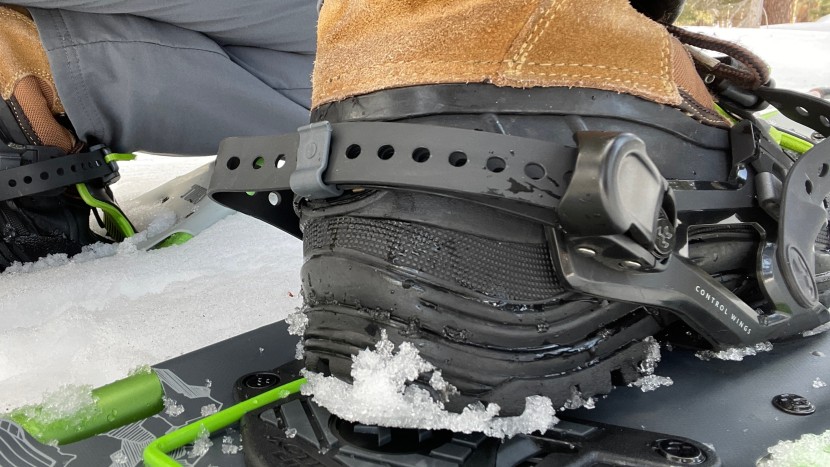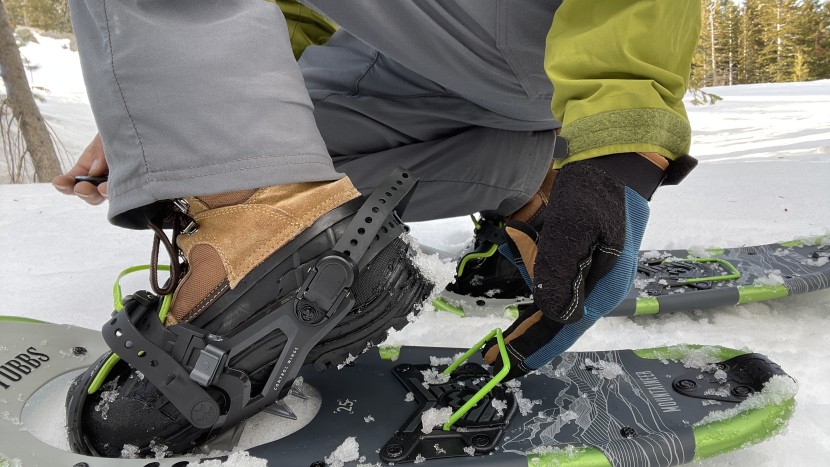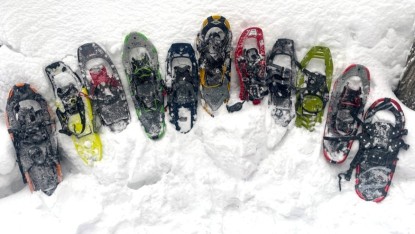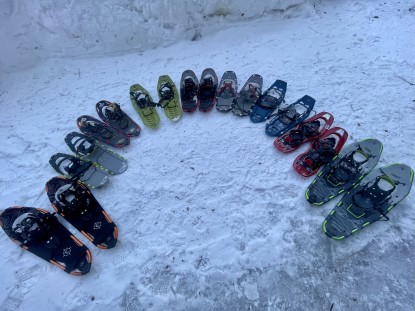
Our Verdict
Our Analysis and Test Results
The Mountaineer is everything the modern winter traveler has come to expect from a snowshoe, with nothing extra or special.
Flotation
The driving factor of flotation is the surface area of the snowshoe, and the Mountaineer delivers what you expect in this department. There could be more flotation if the tail was less tapered, but we think it's a worthy trade-off for walking comfort. Tubular frames tend to be pretty rigid, which makes the most out of the surface area that this snowshoe does have.
Traction
The Mountaineer is nothing special in the traction department. Tubular frames do nothing traction-wise, so this model starts with a disadvantage. It has the standard underfoot and under-heel spikes, though they are slightly larger and more fearsome looking than on other models.
Walkability
This metric is directly impacted by design choices. In the case of the Mountaineer, it's the hybrid strapped/hinged binding attachment that makes a noticeable difference. Unlike some hybrids, this design is actually the best of both worlds. It sports the precision of a hinged design and the shock absorption for firmer snow and packed trails that strapped models offer. The main difference between this and a pure strap attachment is that — like hinged models — the tail tends to drag in the snow. Our testers generally didn't have a problem with this.
Bindings
The Mountaineer is pretty easy to get into; slide your foot in, pull the heel strap tight and push the buckle down, pull the two forefoot straps tight, and away you go. Getting out is even easier: pull up on the forefoot release strap, pull forward on the heel strap, and you're out. Pretty much everyone who used these snowshoes for the first time had no trouble with the bindings-- ease of use is one of this model's strong suits. Additionally, some heel risers have a frustrating amount of resistance for locking the risers in place and for lowering them, but we did not find that with this model — they are easy to raise and lower in all but the bulkiest of gloves.
The bindings on the Mountaineer are all rubber pin-in-hole straps, a favorite type of our testing team for their security. The heel strap has a fairly standard latching buckle, and the two forefoot straps pull a piece of padded plastic down onto the top of your foot. These snowshoes were really secure — especially on the downhills. In addition, the padded plastic distributes the load in a fairly comfortable way on softer shoes.
Should You Buy the Tubbs Mountaineer?
This snowshoe puts in an above-average performance in all of our metrics. In particular, the deck-to-binding attachment is unique. Hikers who know they want that connection paired with above-average traction should consider this model, especially if it's on sale, but most winter travelers could get more snowshoe for their dollar.
What Other Snowshoes Should You Consider?
If you want to venture into mountainous terrain in the winter, consider the Tubbs Flex VRT. This model has more traction, the bindings are a bit easier to use, and they weigh less. Also worth consideration is the MSR Evo Ascent. This time-tested snowshoe is a bit more nimble due to its smaller deck.
| Awards | |
|---|---|
| Price | $280 List Check Amazon (on sale!) |
Overall Score  |
|
| Star Rating | |
| Bottom Line | This comfortable and easy to use snowshoe is nothing special but gets the job done |
| Pros | Comfortable, easy to use |
| Cons | Expensive, not the best traction |
| Rating Categories | Tubbs Mountaineer |
| Flotation (30%) | |
| Traction (30%) | |
| Walkability (20%) | |
| Bindings (20%) | |
| Specifications | Tubbs Mountaineer |
| Measured Weight (per pair) | 4.9 lbs |
| Sizes Available | 25", 30", 36" |
| Binding System | Rubber straps with plastic buckles |
| Frame Material | Aluminum |
| Measured Surface Area | 197 sq in |
| Measured Dimensions | 25"L x 8"W |
| Binding/Deck Connection | Hybrid hinged and strapped |
| Crampon/Traction Aids | Steel crampons, rails, and teeth |
| Deck Material | Soft-Tec PVC-coated polyester |
| Heel Lift | Yes |
| Flotation Tails Sold Separately | No |
| Men's/Women's Versions Available | Yes |
| Optimum Weight Load (per manufacturer) | 120-200 lbs (size 25") 170-250 lbs (size 30") 220-300 lbs (size 36") |
| Tested Size | 25" |


